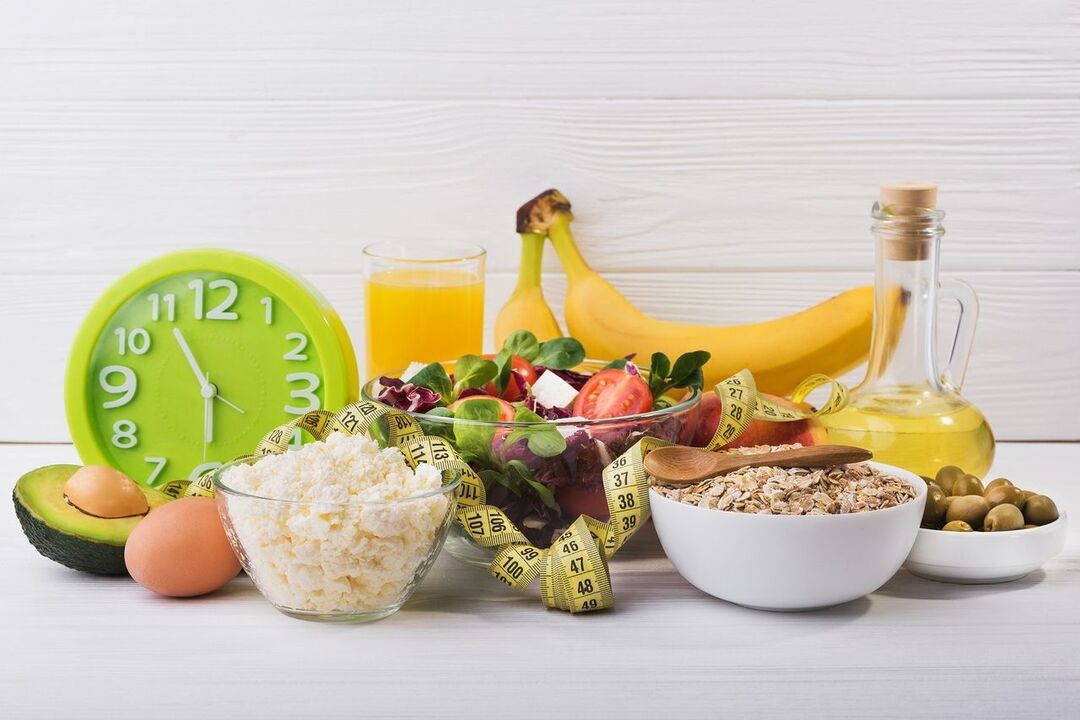
The treatment of inflamed pancreas (inflammation of the pancreas) involves a complex therapy that involves not only taking medications to relieve seizures in the organ channels and normalizing digestive processes, but also diet. Adherence to this is very important, as the development of pancreatitis in 90% of cases is precisely due to malnutrition and alcohol misuse. In other words, an inflammatory diet for the pancreas will help eliminate the factor that has disrupted the work of this organ. And if not eliminated, no medication will help prevent further progression of the disease.
general information
Before we talk about how to eat with pancreatitis, we need to say a few words about the disease itself and the mechanism by which it develops. As mentioned at the outset, the main reasons for its development are unhealthy eating and alcohol consumption. These factors negatively affect the condition of the pancreas, place a heavy load on it, and stimulate the production of digestive enzymes.
If a person is constantly eating "heavy" foods, sooner or later the pancreas will start to "get tired, " leading to damage to its cells and a decrease in the synthesis of digestive enzymes. This will cause indigestion and an even greater increase in the load on the organ. As a result, acute inflammatory processes develop in the pancreas, accompanied by convulsions in the ducts through which digestive enzymes flow out into the duodenum. As a result, they accumulate in the gland and begin to digest their own cells, causing a severe pain attack and necrosis (tissue death).
Thus, the development of acute pancreatitis occurs. And if the treatment is done incorrectly, the inflammatory processes take on a chronic form and only become impossible later. The peculiarity of chronic pancreatitis is that it worsens intermittently and causes the same clinical picture as in acute inflammation. Only in this case, the processes of self-digestion are activated in the pancreas every time an exacerbation occurs, which sooner or later leads to complete dysfunction of the gland.
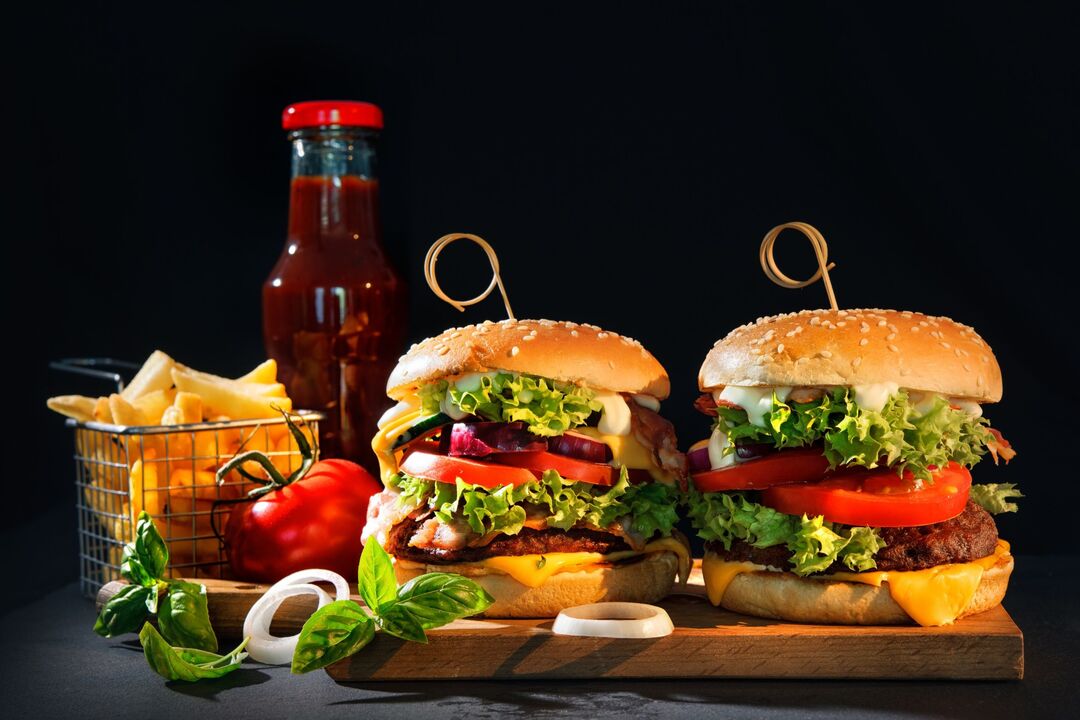
Proper nutrition of pancreatitis avoids frequent exacerbations and prevents disease progression. Because in this case, the diet completely excludes from the patient's diet foods that exert a strong load on the gland, allowing it to remain at rest for a long time.
Keep in mind that the function of the gallbladder and liver depends on the work of the pancreas, which provokes the development of hepatitis, which significantly complicates the treatment process. And if you start developing inflammation of the pancreas, a person has serious health problems that further worsen their well-being.
Therefore, when the primary signs of disease development occur, physicians should perform a full examination that will allow them to properly evaluate the work of the liver and pancreas, as well as other organs that make up the gastrointestinal tract. Because if their function is impaired, the patient needs additional therapy to help them recover.
Acute inflammation and chronic exacerbation: diet
Symptoms of inflammation of the pancreas are pronounced. First, a person suffers from an acute pain attack that can be localized in both the right and left hypochondria, depending on which part of the organ has become inflamed. In this case, the painful syndrome is always shingles in nature. It covers not only the hypochondria region but also virtually the entire abdominal cavity and can radiate to the shoulder blades, lower back and sternum. The pain simply handcuffs the patient and causes each movement to intensify further.
When the pancreas becomes inflamed, the general clinical picture can be supplemented:
- temperature rise;
- nausea and vomiting;
- diarrhea;
- chills;
- weakness;
- whitening of the skin, etc.
In case of acute pancreatitis and exacerbation of a chronic patient, immediate hospitalization is required, as only qualified medical care will prevent the pancreatic self-digestion processes and stop the pain syndrome. In this case, only drug therapy is used, while all drugs are administered intravenously or intramuscularly.
Diet also plays an important role in the treatment of acute or worsening chronic inflammation. And when we talk about what to eat in this case, the answer is simple - nothing. The patient has to starve for several days because this is the only way to reduce the secretion of digestive enzymes and inflammation.
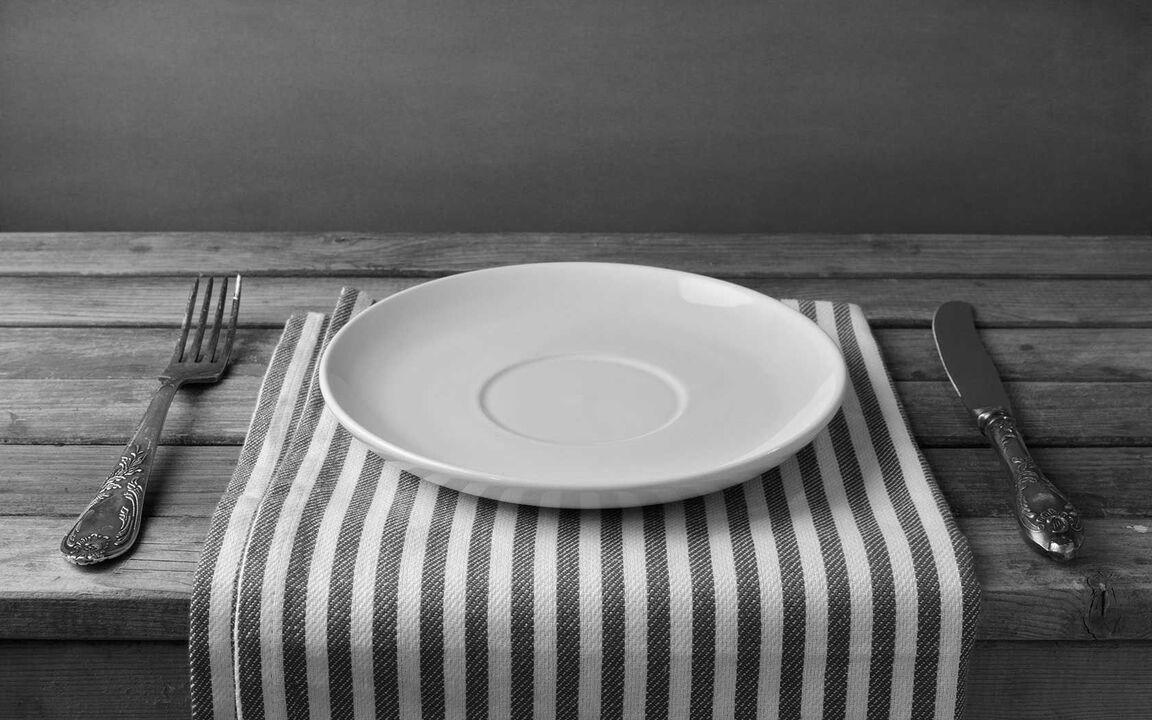
In the event of an acute attack, the consumption of non-carbonated mineral water in very small quantities and at regular intervals is permitted. The patient should only eat for the first time if doctors manage to stop the seizure completely. This usually happens for 2-3 days.
In this case, all food is served warm and pureed only. During this period it is allowed:
- mashed potatoes cooked in water without milk and butter;
- porridge on the water;
- gel;
- compotes;
- biscuits.
The patient should follow such a diet for about 2-3 weeks. And only after all the signs of acute inflammation of the pancreas have disappeared are they added to the diet:
- low fat fish and meat;
- fermented milk and milk products;
- dairy soups and cereals;
- vegetable and fruit juices;
- dried bread.
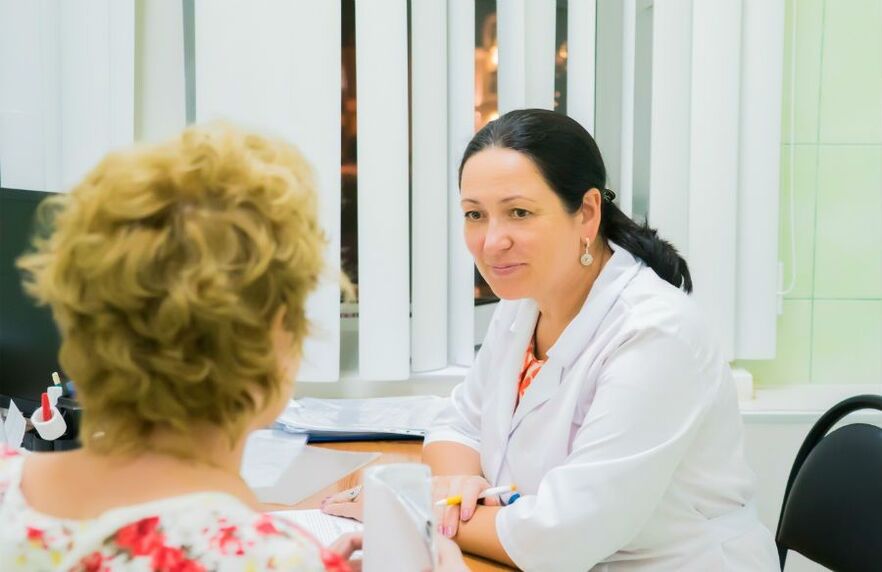
Gradually and only 8-10 weeks after inflammation, you should switch to a "normal" diet. In this case, certain restrictions and rules must be followed to prevent a recurrence of the attack. And what kind of diet is prescribed for patients with inflammation of the pancreas, you can now find out.
Diet after stopping the attack
So it has been discussed above what kind of diet is prescribed for pancreatitis. But what to do next, if the attack has already been arrested and the patient's condition is returning to normal? As the cells of the pancreas do not have a self-healing property, the patient must follow a diet with its own characteristics in order to prevent further destruction and damage to the function of the organ:
- food should be served hot (hot and cold foods irritate the pancreas and can cause a painful attack);
- all food must be steamed or cooked;
- doses should be small (this reduces the load on the pancreas);
- should be eaten 5-6 times a day, the last meal should be no later than 2 hours before bedtime (in case of pancreatitis, do not eat at night).
There are certain foods that should not be eaten with this disease. These include:
- all fatty fish and meat;
- fried and fatty foods;
- Salo;
- smoked meats;
- fresh confectionery;
- fresh pastries;
- high fat (more than 1. 5%) dairy and fermented milk products;
- sausage;
- half-done products;
- conserve;
- hot spices and sauces;
- carbonated and alcoholic beverages.

When talking about a diet to follow in pancreatitis, special attention should be paid to alcohol consumption. Some people who suffer from this disease believe that if they drink 50 to 100 ml of alcohol a week, there will be nothing wrong with it, as such a dose of alcohol is considered beneficial even for the body. This is normally true, but not in cases of pancreatitis.
Alcoholic beverages contain ethyl alcohol, which has a devastating effect on the body’s cell and increases appetite, causing a person to involuntarily start eating much more. This in turn leads to an increase in the load on the pancreas and increases the risk of pain. Therefore, those who have been diagnosed with inflammation of the pancreas are strictly prohibited from consuming alcohol, even in small amounts.
As regards the authorized products, they are as follows:
- lean meats - turkey, chicken, rabbit, veal;
- lean fish;
- buckwheat, rice, semolina, pasta, lentils;
- vegetables and fruits;
- fruit juices (only unpackaged);
- egg;
- dried bakery wares;
- cakes without cream and chocolate filling;
- milk, cheese, cottage cheese;
- kefir, fermented fried milk.
All of these dishes can easily prepare your diet menu for an entire week. Plus, every day will be varied. For example, meat can be easily made into dumplings, slices, meatballs, etc. Made from cottage cheese - casserole dishes and cheese cakes. Vegetables can also be used for side dishes and salads. The most important thing is to turn on your imagination.
But it should not be forgotten that in addition to diet, you should also take medications prescribed by your doctor. They help improve digestion and prevent the disease from getting worse.
Diet recipes
There are plenty of recipes on the internet for dietary foods that can be consumed with pancreatitis. With their help, you can easily put together a rough menu for the week. For example, the recipe for making cottage cheese pudding, which can be used for both breakfast and afternoon snacks, is very popular. You will need the following ingredients to make it:
- fat-free cottage cheese - 350 g;
- chicken eggs - 4 pcs;
- low-fat sour cream - 80 g;
- granulated sugar - 100 g;
- starch - 1 tbsp;
- semolina - 1 tbsp
To make the cottage cheese pudding, you must first beat the cottage cheese thoroughly with a blender or mixer to obtain a homogeneous mass of air. Then add the chicken egg yolk (the protein should be refrigerated for a while) and mix thoroughly again. Then add sour cream, semolina and starch to the resulting mass and mix thoroughly again with a stirrer.
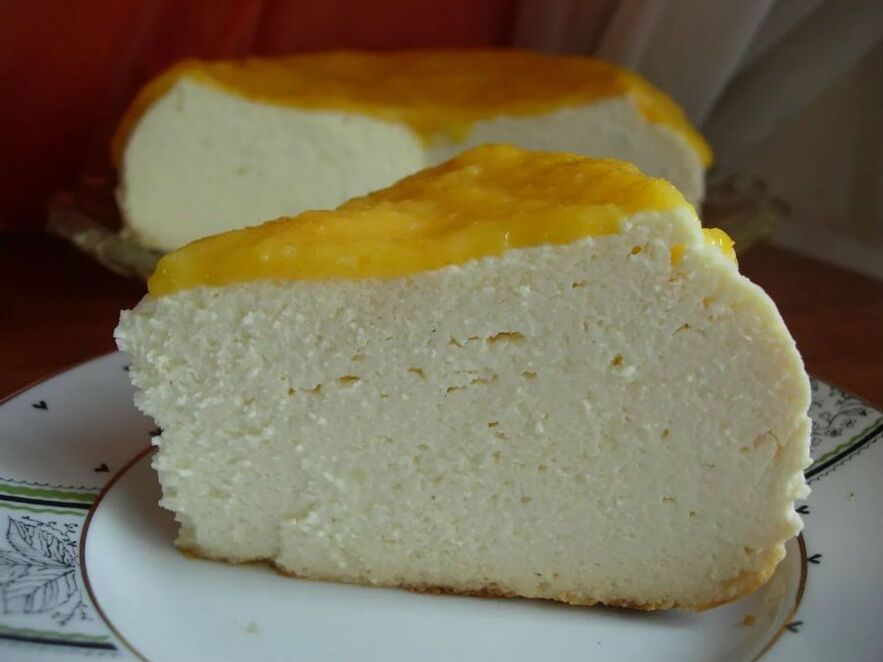
The proteins should then be removed from the refrigerator and beaten until a peak is formed, gradually adding the sugar. You will then need to mix the proteins with the curd mass, gently mixing them with a spoon but not a blender.
Once the cottage cheese is tightly cooked (it should be liquid), pour it into a parchment-covered baking sheet. Cover the mold with aluminum foil and place in a preheated oven at 180 degrees for 30 minutes. After this time, the foil should be removed and the pudding should be further baked for about 15-20 minutes. Once done, the oven should be turned off, but the door should not be opened immediately as the pudding may settle. Give it 20-30 minutes to cool a bit, after which it can be served.
There is another recipe for cooking a food that can be consumed with inflammation of the pancreas. And this is a chicken-cauliflower puree soup. To prepare it you will need:
- water - 2 l;
- potatoes - 2 pcs. ;
- cauliflower - 5-7 inflorescences;
- carrots - 1 piece;
- chicken breast - 300-350 g.
Pour the chicken breast over 1 liter of water and simmer. After boiling, bring to a boil for 20 minutes, then drain the water and refill the breast with water and cook completely. The broth must then be lowered again, removed from the breast, cooled and rolled through a meat grinder several times.
The carrots and potatoes are then peeled, rinsed under running water and cut into cubes. The vegetables should be poured over water and placed on the fire. After boiling, cook for 10 minutes, then add the cauliflower and continue to cook for approx. 7-10 minutes.
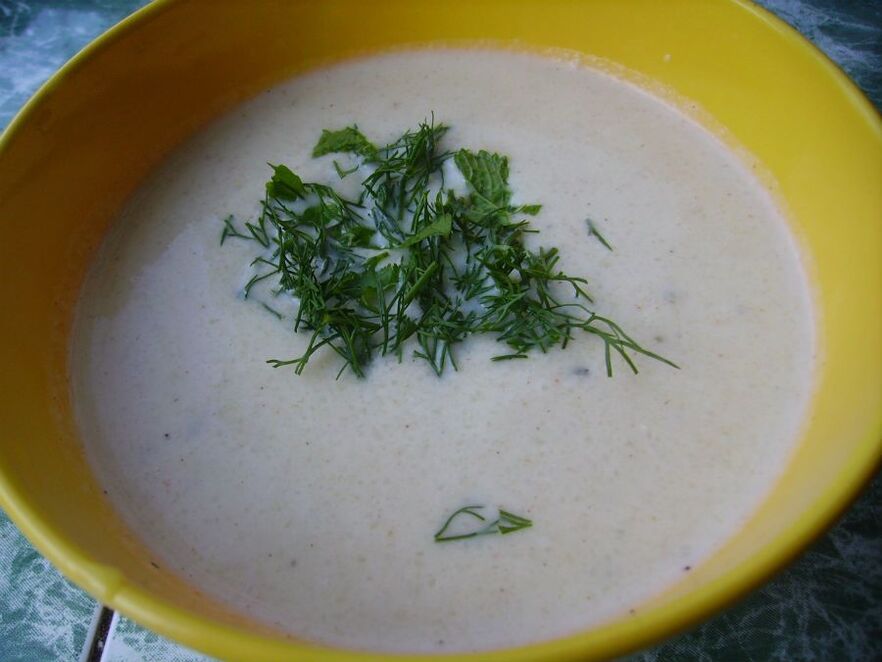
When all the vegetables are ready, you have to take them out of the resulting vegetable juice, grind them in a blender or rub them through a sieve, and then mix them again with the broth, only this time we add the minced chicken. If the inflammation of the pancreas is in a stable remission phase, the prepared broth can be lightly salted and fresh herbs can be added.
There are many recipes for making diet food. The point is not to mix it up in this breed and only use those that contain products that are approved for inflammation of the pancreas. And the doctor needs to talk about them in more detail.






























